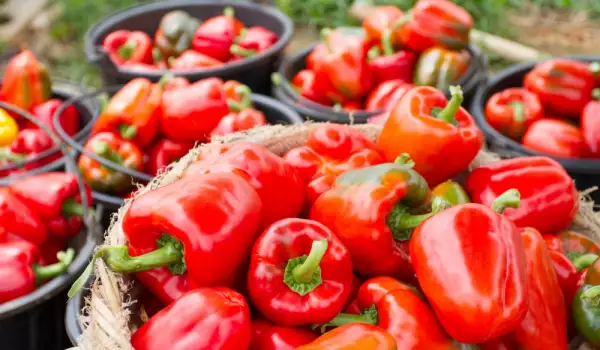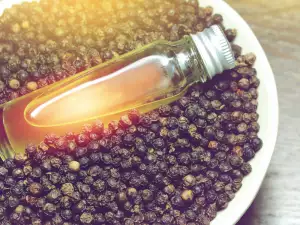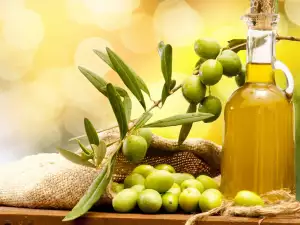Little did Christopher Columbus suspect what conflicts between people would be caused centuries later by the fruit of the plant whose seeds he personally brought back after his first voyage to the Indies, actually to America, as a gift to the Spanish queen Isabella of Castile.
The controversy surrounding peppers in their roasting treatment only proves the enormous importance that the sweet varieties of the American plant have for us.
Only one thing remains undisputed about peppers - both fresh and roasted peppers, sweet and spicy, they are consistently delicious. Not only that, they are remarkably beneficial for health. They are even considered a multivitamin source or vitamin factory.
The best part is that when you roast, cook or preserve the peppers, they lose a very small percentage of their beneficial substances. Undoubtedly, this very well-known and loved vegetable deserves people to get to know it better.
History of red pepper
Peppers are among the most loved vegetables, with a huge contribution not only to our attachment to the place of birth, but also to the diversity of our culinary traditions, in which the red pepper occupies a place of honor. And this is understandable, it is in lutenitsa in all its variants, it is found dried for the winter, in pickles with peppers and other culinary delights.
The pepper has become such an invariable part of our daily menu that we rarely think about when it arrived on our lands and from where. South America and the West Indies are considered its homeland. The vegetable was discovered at the beginning of the 16th century by Spanish explorers who brought peppers to Europe.
At first only green peppers were used, then red ones became known. In fact, red and green peppers are the fruit of the same plant, but at a different stage of maturity. The red ones, which are left on the stalk almost until the end of summer, are much more aromatic and sweet, but the green peppers also have their charm and use. With their light aroma, their fresh and raw taste, they are an indispensable ingredient in the first summer salads.
Classification of red pepper

Red peppers, also called sweet pepper, belong to the Capsicum or Capsa family, which means box. This biological family includes two large categories of the species - the large sweet pepper and a variety of species of hot peppers of different appearance, size, shape and spiciness.
Large sweet peppers are also divided into types. Green and red peppers are the most common, but yellow, white, orange and even violet are also grown in various places around the world.
In fact, red and green are classified under one species. The red ones, which are left on the stalk almost until the end of summer, are much more aromatic and sweet.
These perennial vegetable plants belong to the Potato family. The fruit of the pepper is a hollow berry, most often elongated or oval in shape. Red peppers contain many sugars, proteins, vitamins, essential and fatty oils.
Nutritional value and chemical composition of red pepper
100 g of product contains:
- 31 calories;
- 92% water;
- 1 g of proteins;
- 6 g of carbohydrates;
- 4.2 g of sugars;
- 2.1 g of fiber;
- 2.1 g of fat.
Vitamins and minerals in red peppers

Red peppers are rich in various vitamins and minerals, here are the most important of them:
Vitamin C - one medium-sized pepper provides 169% of the required daily intake of vitamin C, making red pepper one of the most dietary and rich sources of the vitamin. In 100 g of fruit, the amount of vitamin C is 128 mg.
Vitamin B6 - 0.3 mg per 100 g of fruit, which is 15% of the daily requirement of this vitamin. Vitamin B6 plays an important role in the formation of red blood cells.
Vitamin K1 - 4.9 mcg, which represents 6 percent of daily needs. This vitamin is important for blood clotting and bone health.
Potassium - 211 mg per 100 g of peppers - the mineral potassium is essential for heart health.
Folic acid - known as vitamin B9, folic acid performs various functions in the human body, but is especially important for pregnant women. 100 g of peppers contain 46 micrograms of it, which corresponds to 11% of daily needs.
Vitamin E - a strong antioxidant that is of particular importance for the health of nerves and muscles. In 100 g there are 1.6 milligrams or 8 percent of our daily needs.
Vitamin A - 63 percent of daily needs are provided by 100 grams of peppers. The vitamin is important for eyesight.
Other important minerals in the composition of the pepper are magnesium with a content of 12 mg, phosphorus with 26 mg.
Surprisingly, peppers also contain a percentage of fat that provides the important omega 3 and 6, respectively 25 and 45 milligrams per 100 grams.
Benefits of red pepper

Improves eye health
The most common for eye disorders include macular degeneration and cataracts. Nutrition, however, can play an important role in the development of these diseases.
Lutein and zeaxanthin are carotenoids found in high doses in peppers and improve eye health.
Regular consumption of foods rich in these compounds reduces the risk of developing cataracts and macular degeneration, so the inclusion of healthy and tasty peppers in the diet is recommended.
Red peppers lower the risk of anemia
Anemia is a common condition characterized by a reduced ability of the blood to carry oxygen. One of the most common reasons for this is iron deficiency, the main symptoms of which are weakness and fatigue.
Red peppers are not only a source of iron, but also contain a lot of vitamin C, which increases the absorption of iron. For this reason, consuming iron-rich foods such as spinach or meat in combination with peppers reduces the risk of anemia.
They help to reduce weight
Burn more calories with the help of red peppers. Sweet red peppers can activate thermogenesis and increase metabolic rate. Red peppers don't contain capsaicin, which makes peppers spicy and sweat-inducing, but they have a mild thermogenic effect that increases metabolism without raising heart rate and blood pressure like hot peppers do.
Red peppers for beautiful skin, hair and nails
Red peppers are rich in provitamin A, which makes them an excellent beautifying agent. Eating this plant stimulates hair growth and improves skin condition.
Red pepper juice is very rich in silicon, the substance that is very important for hair and nails, helps the normal functioning of the sebaceous glands. Red pepper juice mixed with carrot juice gives excellent results in clearing pimples and acne from the skin. The mixture of the two juices is also recommended for gas in the intestines, stomach cramps. The recommended daily dose is 50 milliliters.
Pepper seeds are a powerful antioxidant
Pepper seeds contain a lot of antioxidants. The combined effects of vitamins A and C create great antioxidant capabilities for the body. The lycopene in the red pepper mix makes it one of the superfoods. Lycopene is what makes tomatoes and peppers red. Red peppers are one of the vegetables highest in lycopene that have been shown to help prevent many types of cancer, including prostate and lung cancer.
Contraindications for consumption of red peppers

Red peppers are healthy, but in some cases you should be careful with them. Their consumption should not be too much in case of:
- liver diseases;
- stomach problems;
- problems with the intestines;
- problems with the kidneys.
Red peppers contain a lot of crude fiber and essential oils, which is why these restrictions are imposed.
Also try our red pepper recipes, which are:
- and peppers burek;




















Comments